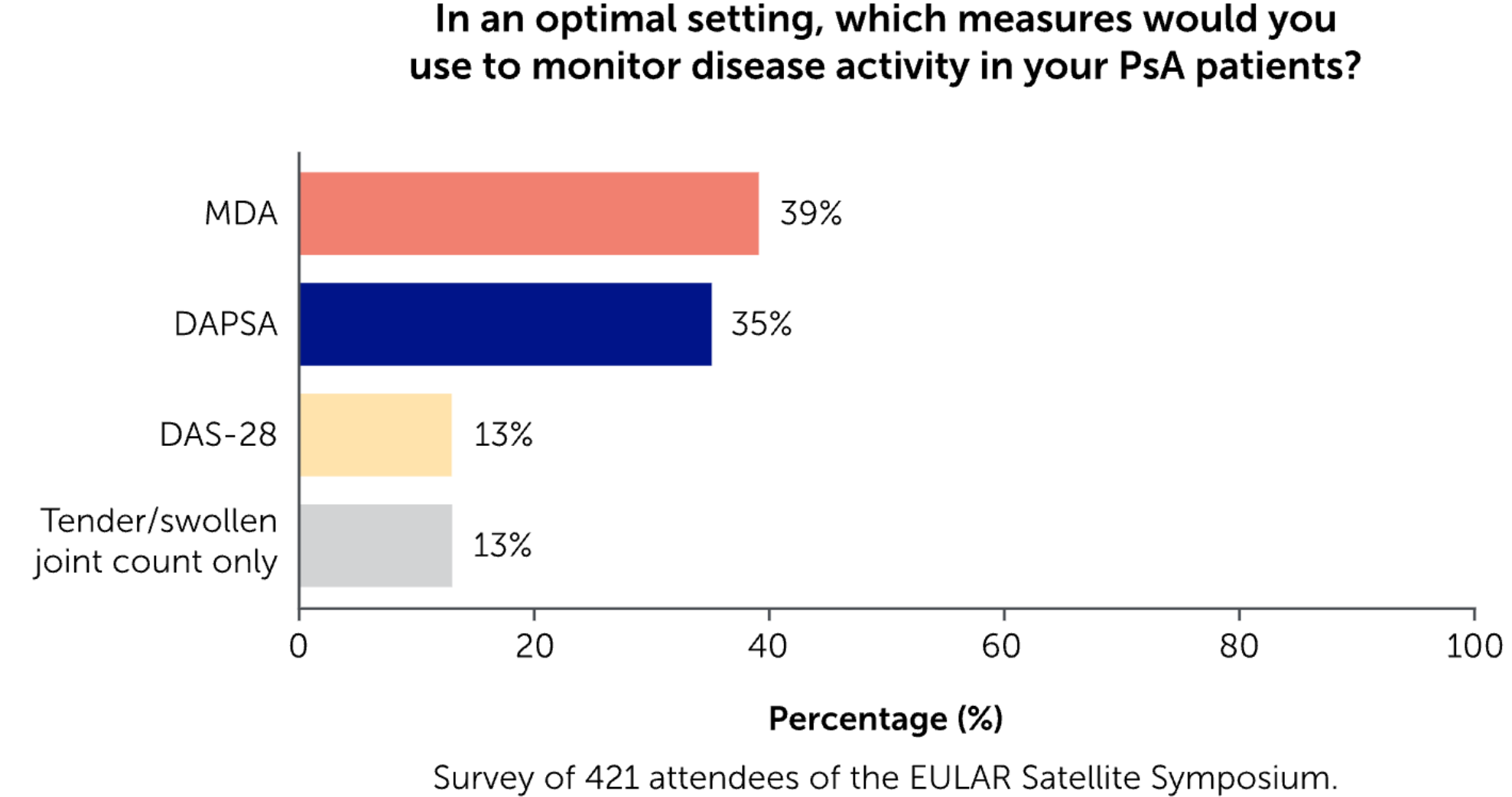Explore the key conclusions around aiming for higher treatment targets, discussed at the UCB-sponsored Satellite Symposium presented at EULAR 2023.

Explore the key conclusions around aiming for higher treatment targets, discussed at the UCB-sponsored Satellite Symposium presented at EULAR 2023.
'The time is NOW! Aiming for higher treatment targets in PsA and axSpA’ UCB-sponsored symposium was presented by Prof Lars Erik Kristensen, Dr Fabian Proft, Prof Dr Denis Poddubnyy and Prof Francesco Ciccia. Let’s have a closer look at the key takeaways from this symposium.
Prof Lars Erik Kristensen
Achieving higher treatment targets of MDA, DAPSA LDA and PASI 100 in PsA leads to fewer symptoms, reduces radiographic progression and improves overall patient quality of life. However, a large proportion of patients do not achieve these higher treatment targets in a real-world setting
Of the 421 attendees, 39% voted that they would use MDA in an optimal setting to monitor disease activity in their patients with PsA, with 35% voting the same for DAPSA

While the primary goal should be MDA or treating-to-target, the panel highlighted that we need to go deeper and analyse the impacts of specific symptom intensity on quality of life for individual patients
Assessing patients on an individual basis is also important when considering whether to switch to a different therapy. For example, a patient who achieves clear skin and reduced CRP with therapy may not be recommended for treatment switching. However, some patients may still experience chronic pain and/or fatigue; therefore, these symptoms should also be considered and treated appropriately
Dr Fabian Proft
Guidelines for axSpA recommend aiming for lower ASDAS scores; however, higher treatment targets in axSpA are often not achieved in the real world. Dr Proft discussed discrepancies in the clinical measures of disease and objective signs of inflammation, and how measures of inflammation may be predictive of structural progression
Of the 421 attendees, 76% agreed that the objective signs of inflammation (MRI and/or CRP) are as important as clinical response when monitoring patients with axSpA in clinical practice

Dr Proft summarised that a combination of measuring objective signs of inflammation and clinical response is key to understanding why some patients do not respond to specific treatment modalities
MRI can be a valuable technique for monitoring patient response to treatment, particularly for patients who only experience a partial response. However, it was noted that it is not always practical to have every patient undergo MRI at every clinic visit, so some clinical judgement must be employed
In addition to monitoring objective signs of inflammation, chronic pain should be considered when making treatment selections. Treatment interventions and exercise plans that can reduce pain, alongside physical and psychological support, can significantly improve patient care
Evidence from dermatology colleagues shows that it is possible to switch between the currently available IL-17 inhibitors, rather than switching between therapeutic classes. Slight differences in binding to IL-17A cytokines suggest that, despite being in the same class, there will be nuances with each treatment
Prof Dr Denis Poddubnyy
The time is now to aim for higher treatment targets. Recent therapeutic innovations have provided additional options for patient management and made higher treatment targets a possibility in the clinic today
Prof Dr Poddubnyy closed with a summary of his final insights. The achievement of high treatment targets is now possible; patient outcomes can be improved with earlier diagnosis and the appropriate use of effective treatments now available to patients
Prof Francesco Ciccia
“Raising the bar should be the objective and our goal for the future. We need to be brave and have higher treatment targets for our patients with PsA and axSpA.”
The EULAR Satellite Symposium was organised and sponsored by UCB. This post summarises the presentations at the event and the points raised by the invited speakers.
Other articles you might like
You can read more articles that might interest you.
Want to see more videos?
Can’t find the answer you’re looking for? See all the Resources we have.